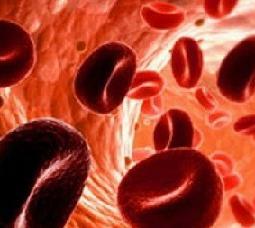 Hemoglobin is part of the red blood cells. The level of content of this element is one of the most important indicators of blood composition.
Hemoglobin is part of the red blood cells. The level of content of this element is one of the most important indicators of blood composition.
From his concentration depends on the person's well-being and performance. By its structure, hemoglobin is a complex protein, consisting of two main components: directly protein and iron.
When giving a blood test we often hear from doctors that hemoglobin is within normal limits. And what does this expression mean, and how is the norm of hemoglobin established, on what does its level depend? These questions often remain unanswered. Let's try to understand them in more detail. So, hemoglobin: the norm in women by age, the table is presented a little lower.
Symptoms of low hemoglobin
The condition in which hemoglobin falls below the norm is called iron deficiency anemia (or anemia). The first signs of this ailment are such symptoms:- noise in ears;
- pale and dry skin;
- frequent palpitations;
- dyspnea;
- foliation of nails with blackening;
- general weakness and severe fatigue;
- carious disease, yellow teeth;
- cracks and jams at the corners of the lips;
- lack of sleep;
- migraine and dizziness;
- brittle, dry and dropping hair;
- the tongue acquires a scarlet color.
To increase the lowered hemoglobin in the blood to the norm, eat meat, liver, beef tongue, because about 28% of iron is absorbed from the meat by our body. And iron from products is better absorbed with products rich in vitamin C.
Drink pomegranate, beet, carrot juice, cranberry, apple and juices can be mixed. Of fruits and vegetables our body absorbs about 6% of iron. Of fish, seafood, eggs, our body absorbs about 11% of iron.
Symptoms of high hemoglobin
The increase in hemoglobin above the norm may be accompanied by very unpleasant symptoms:
- high fatigue;
- itching;
- dizziness;
- sleepiness, and sometimes opposite problems with sleep;
- deterioration of appetite;
- headaches;
- colic in the abdomen;
- pulmonary embolism;
- increased blood pressure.
Increased hemoglobin leads to an increase in the viscosity and density of the blood fluid, resulting in the appearance of blood clots, as well as the formation of thrombi.
The main drug treatment of high hemoglobin is the mandatory intake of antithrombotic drugs (cardiomagnesium, aspirin, aspecard, lospirin) that promote blood discharge, which is very dense and viscous at high hemoglobin. Also, strict dietotherapy is prescribed with the restriction of all salted, roasted, as well as spicy.
The rate of glycated hemoglobin
The norm of glycated hemoglobin is 4-6.5% of the level of free hemoglobin in the blood. At what level of glycated hemoglobin can not depend on the concentration of hemoglobin in the blood. The norm of hemoglobin of newborns (fetal hemoglobin) in the blood of an adult is up to 1%.
Hemoglobin: the norm in men
As a rule, the norm of hemoglobin in men and women is different. It also depends on the age and conditions of the person around you. In men, the norm of hemoglobin in the blood is 130-160 mmol / l, and in women - 120-140 mmol / l. This is due to the presence in men of the hormone testosterone. Constant physical exertion experienced by members of the stronger sex also determine the greater formation of this protein in them.
The norm of hemoglobin in the blood in men over 50 is 117-138 mmol / l. In case if according to the analysis answers it turns out that the level of protein recedes from the permissible norm, then we should seriously take care of our health.
The norm of hemoglobin in women by age: table
The norm of hemoglobin is determined by passing a general blood test. The norm for a woman is the figure of 120-140 grams per liter. A higher figure can be observed in professional athletes (up to 160 g / l) or in smokers ladies (up to 150 g / l). In such cases, a small deviation is considered a variant of the norm.
The reference values of hemoglobin depending on age are given in the table:
- 18 - 19 years - 115 - 140 grams per liter;
- 20 - 29 years - 118 - 150 g / l;
- 30 - 39 years - 120 - 145 g / l .;
- 40 - 49 years - 120 - 140 g / l .;
- 50 - 59 years - 116 - 138 gr./l .;
- 60 - 69 years - 115 - 135 gr./l .;
- 70 - 85 years - 105 - 130 gr./l.
When pregnancy is also set its hemoglobin in the blood. The rate for this period is 11.0-13.0 g / dL (110-130 g / l). This phenomenon is affected by the physiological characteristics of the pregnant body. Over the blood vessels of the future mother, 40-50% more blood begins to circulate, so the hemoglobin content in her decreases, the number of red blood cells increases by only 15-20%.
Also, the hemoglobin content in the blood can change with the onset of the menstrual cycle in the range of 110-120 g / l.

How to choose probiotics for the intestine: a list of drugs.

Effective and inexpensive cough syrups for children and adults.

Modern non-steroidal anti-inflammatory drugs.

Review of tablets from the increased pressure of the new generation.
 Antiviral drugs are inexpensive and effective.
Antiviral drugs are inexpensive and effective.


